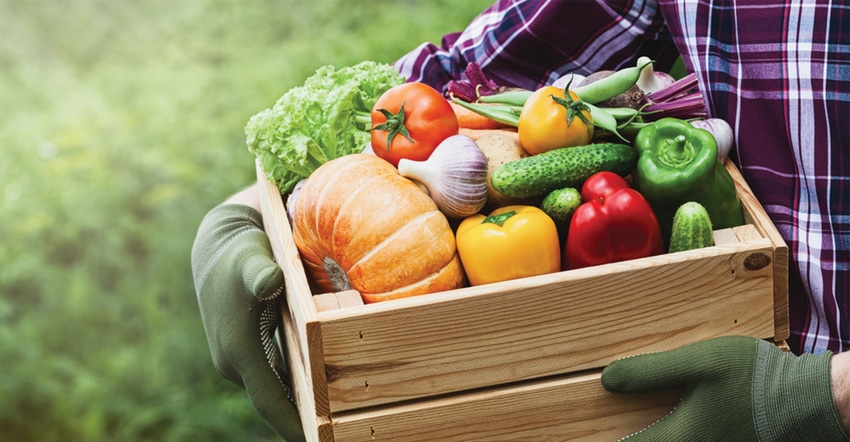Kids’ Food Basket Teaches Kids the Power of Composting
Michigan-based Kids’ Food Basket delivers 10,000 meals a day to local school kids, made from produce grown on the grassroots nonprofit’s ten-acre farm.

Michigan-based Kids’ Food Basket delivers 10,000 meals a day to local school kids, made from produce grown on the grassroots nonprofit’s ten-acre farm. The food scraps left after preparation, along with the broken or oversized cucumbers, squash, and other farm output, generate a lot of waste.
The peels, stems, rinds and cores, along with the unsellable produce, generate about 300 to 500 pounds of waste that could have headed to landfill. Instead, they go into a compost system that the organization went on to launch and operate.
Kids’ Food Basket’s organics recycling beginnings were simple– a cold compost system that basically required adding organics to a pile then letting nature break down the material. But generating a compost supply through this cheap, low-maintenance method took up to a full year. Farm manager Jason Lundberg was having to invest thousands of dollars in compost each season to keep up with production.
Then he heard about a decommissioned in-vessel compost system sitting around at Northland University in Wisconsin. It’s a sophisticated system where composting happens in controlled batches in airtight vessels. He got ahold of its main moving parts and built a new greenhouse-like structure around them to protect the piles from the weather.
“It’s supercharging and speeding up the process that nature already has in place. We have finished product in about 30 days,” Lundberg says.
Along with the food scraps, which he describes as the piles’ rocket fuel, he tosses in nitrogen-rich, spent grounds from a nearby coffee company, which add more charge. Local landscapers and the city of Grand Rapids supply wood chips to break down the organics. Those community relationships have proved important in more ways than one.
“We are funded through philanthropy, so it’s good to get the word out to our neighbors about our mission, and to build bridges. Compost has been a way to do this. At the same time, we benefit the environment. We are closing our loop and operating more sustainably every year,” Lundberg says.
All totaled, the farm diverts and makes finished product from 2,000 pounds of input a week.
Students in four counties get more than healthy food through their West Michigan neighbor.
“Our mission is to nourish kids so they can reach their full potential, as well as to educate them about healthy eating and where their food comes from, and a part of that is teaching them about compost,” says Stephanie Mellstead, education and engagement specialist, Kids�’ Food Basket.
“We teach them that we need healthy soil to grow food and that amending it with compost is the best way to keep that soil thriving while ensuring we do not waste resources,” she says.
Young students come out to the farm to see how food is grown, how different composting systems work, and they see where the compost goes.
Snacks are doled out at lessons and kids taste test, with the idea being to lean into their curiosity as they tour. They hear about how purple cabbage has different nutrient needs than green cabbage. They are enticed to try new foods. They learn that the banana peels and other scraps left after they eat can feed the compost pile to make more food to fill their bellies.
They also get ideas about what they can do with what they may otherwise toss that’s still quite edible. Mellstead tells young farm visitors how they can make salsa from overripened tomatoes or roast them with feta, or maybe steam week-old carrots that are losing their crunch.
She also goes out to the school with five-gallon tumblers so kids can roll up their sleeves and compost themselves, spinning the drums daily, observing changes, colors, and smells, and discovering that magic ratio between green and brown organics to get a balanced mixture.
Between on-farm and classroom lessons and worksheets kids can take home, they begin learning as early as age five how to plant. They come out to the farm to volunteer. They learn there are simple compost systems that are quite manageable in their backyards. And they see they can be a part of creating changes to the food system so everyone can access healthy meals, especially in their region. Michigan has one of the largest food deserts in the country, an extended radius with no grocery stores or other healthy food choices.
Between the nutrition and compost lessons, kids learn about other sustainable farming practices, like hydroponics which use 70 to 90% less water than traditional farming techniques.
“We have a space for hydroponics, and you see the kids with big eyes. They get excited and think it’s really cool that you can grow food without soil,” Lundberg says.
They watch no-till farming in play and first realize it doesn’t take a big tractor to grow crops and that this low-tech method benefits the soil and avoids carbon release. The idea of farming at home starts to sound appealing. Some even begin to think about possible career opportunities in agriculture.
“So, what we are doing is teaching kids from a young age that you have the power to achieve a lot. And you should share your voice and ideas,” Mellstead says.
About the Author(s)
You May Also Like




